



Suggested citation: CEEW. 2023. Developing Resilient Renewable Energy Supply Chains for Global Clean Energy Transition. New Delhi: Council on Energy, Environment and Water.
The rapid adoption of renewable energy (RE) will not only help decarbonise the world’s electricity systems but also help realise the desired impacts of our Sustainable Development Goals (SDGs). However, a speedy and risk-proof transition to RE will only be possible if countries can secure access to uninterrupted and affordable supply chains of key technologies. This report presents the current structure of global supply chains for solar photovoltaic (solar PV), onshore and offshore wind, lithium-ion batteries (LIBs), and green hydrogen. It briefly discusses the manufacturing landscape for critical components in these supply chains, including requirements of key minerals, skills, logistics, infrastructure, and associated innovations. Finally, the report captures the evolution of exports and imports of key components and equipment in the aforementioned sectors over the last decade – 2012 to 2021. This analysis assesses the concentration and dependency of key renewable energy components and products.
The report has been commissioned by the Ministry of New and Renewable Energy, Government of India, to inform the G20 Energy Transition Working Group (ETWG) negotiations.
Also read: Addressing Vulnerabilities in the Supply Chain of Critical Minerals
The current global economic development aspirations coincide with intensifying climate risks, growing geo-political adversities, and shrinking carbon space. For several countries, progress on the sustainable development goals (SDGs) is slow, energy demand is rising, and their fiscal bandwidth is stressed as they strike a balance between cleaning up their energy mix and maintaining the affordability of energy supplies for large proportions of their populations (UN 2022, Carbon Tracker and CEEW 2021, Ghosh, A., Ganesan, K. 2015). For the world to achieve a net-zero future, solar and wind power capacities must grow 20 and 11 times between 2020 and 2050, respectively (IRENA 2022, IEA 2021a). With the rise in the share of variable renewable energy (RE) in the electricity systems, storage solutions must see a massive growth. And, for the hard-to-abate sectors, green hydrogen ecosystem must be scaled up rapidly.
The rapid adoption of RE will not only help decarbonise the electricity systems but also help realise the desired impacts of the SDGs. However, a speedy and risk-proof transition to RE will only be possible if countries can secure access to uninterrupted and affordable supply chains of key technologies.
This report presents the current structure of global supply chains for solar photovoltaic (solar PV), onshore and offshore wind, lithium-ion batteries (LIBs), and green hydrogen. It briefly discusses the manufacturing landscape for critical components in these supply chains, including requirements of key minerals, skills, logistics, infrastructure, and associated innovations. Finally, and most importantly, the report captures the evolution of exports and imports of key components and equipment in the aforementioned sectors over the last decade – 2012 to 2021. This analysis further assesses the concentration and dependency of and on key components and products. The key findings include:
Based on the analysis and insights, the report identifies four strategic priorities for the Group of Twenty (G20) to ensure resilient RE supply chains. These are:
Ensure comprehensive tracking of global RE manufacturing capacity and trade flows to inform expansion and diversification strategies and foster competition in trade. This must include tracking of:
Create new avenues of supply and enhanced investments across supply chains to meet the increasing demand for clean technologies. These avenues must lead to:
Enable co-development of technologies and innovations. This could happen through:
Facilitate development of globally accepted standards and certification systems for new and emerging RE technologies such as green hydrogen. This must include:
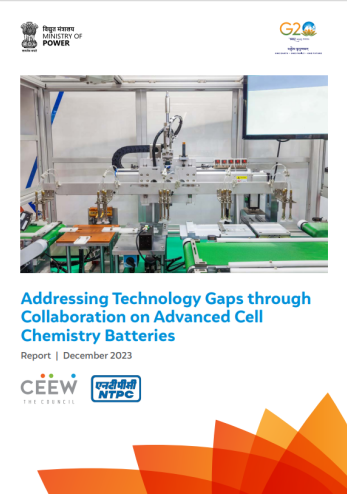
Addressing Technology Gaps through Collaboration on Advanced Cell Chemistry Batteries
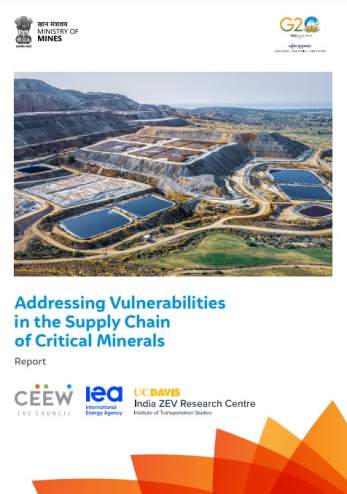
Addressing Vulnerabilities in the Supply Chain of Critical Minerals
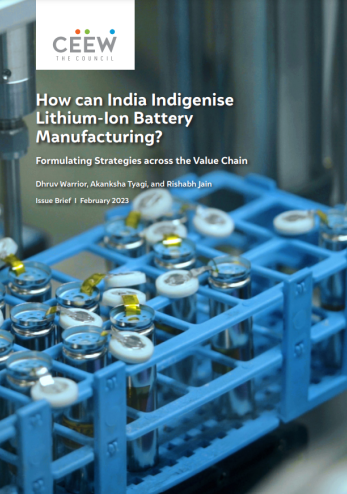
How Can India Indigenise Lithium-Ion Battery Manufacturing?
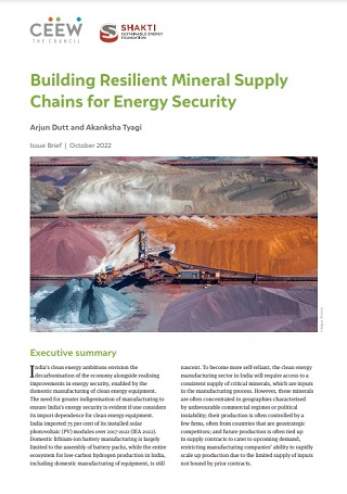
Building Resilient Mineral Supply Chains for Energy Security
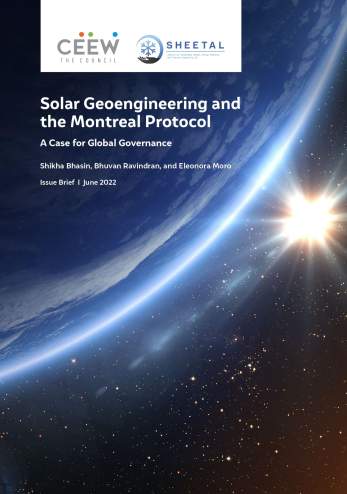
Solar Geoengineering and the Montreal Protocol